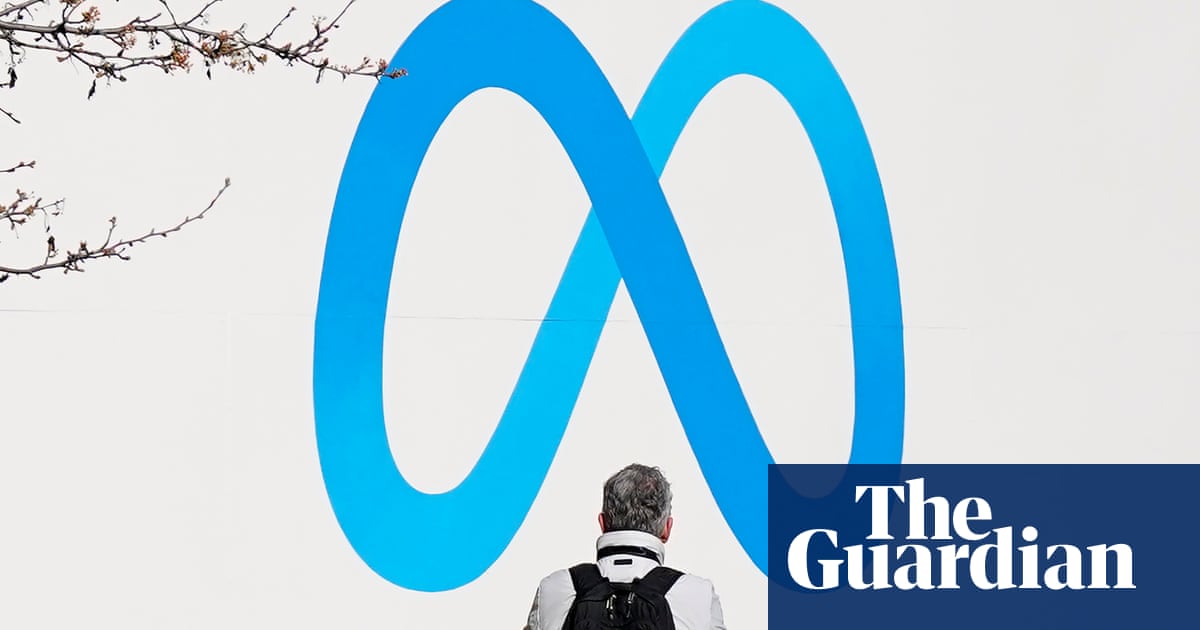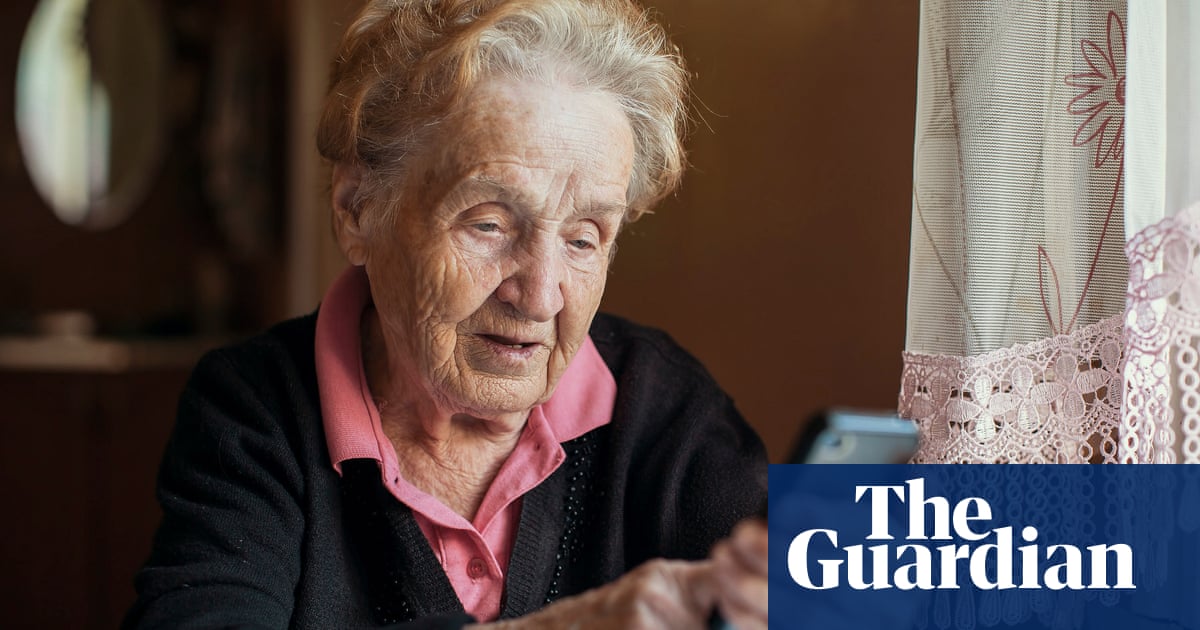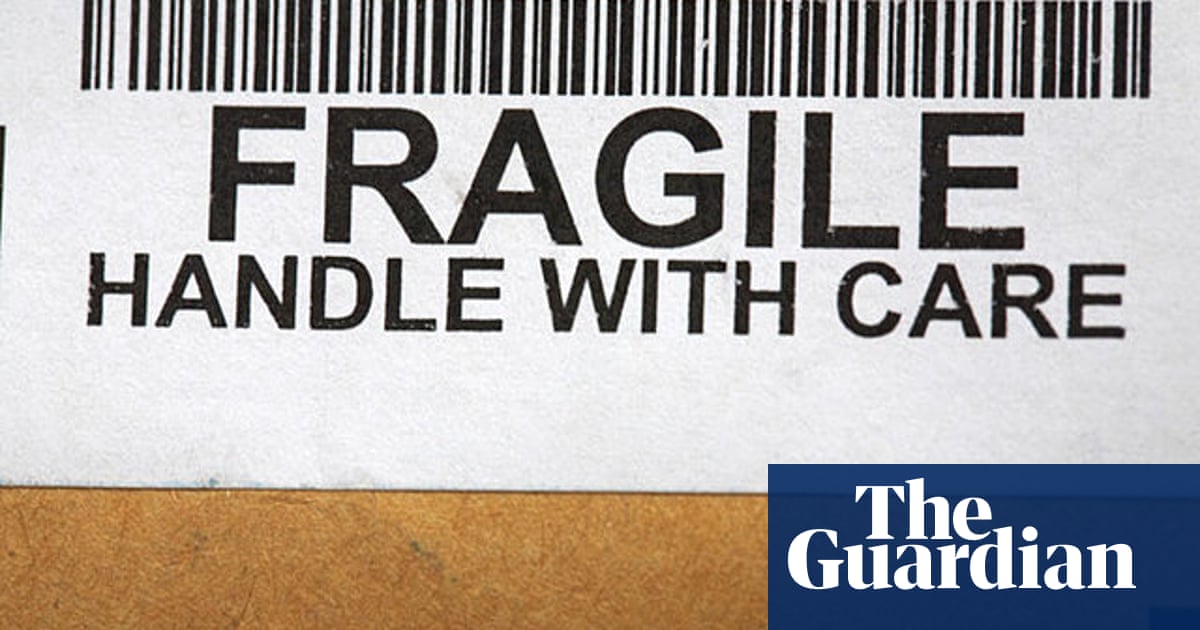More and more of us are indulging in at-home self-care. We all leaned into it back in lockdown, and with today’s barrage of terrifying news, it’s unsurprising we still feel in need of extra TLC. The products and gadgets we’ve been trying have sent the value of the UK beauty industry soaring, growing by nearly 10% in 2023 to £9.56bn, which demonstrates how much preening and prep we’ve been doing from our bathrooms.
You just have to look at social media to see how big an appetite we have for DIY beauty. The trend for “high maintenance to be low maintenance” routines has seen content creators demonstrate ever-more complicated at-home treatments, from lash lifts to 10-step facials. However, is it all as easy as it looks on TikTok? And is it safe to use all those space-age gadgets and high-strength formulations on yourself without the oversight of an expert?
Just because you can do them at home doesn’t mean you should – no matter what the algorithm tells you. To sort the fads from the facts, we asked professionals – from dentists and aestheticians to colourists and gua sha specialists – to find out which beauty treatments you should try at home and which ones you shouldn’t. I’ve also shared the products and devices that are worth investing in and could save you money on professional treatments in the long run.
Do try these at home
Light therapy facials
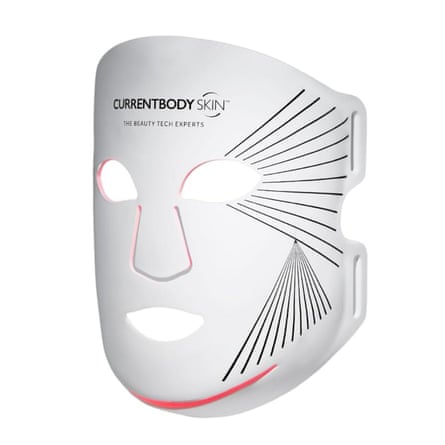
CurrentBody LED light therapy face mask: Series 2
£399.99 at CurrentBody
£399.99 at Amazon
Light therapy is nothing new, but it has gained pace as an in-salon treatment in the 2020s – and with good reason. The Light Salon co-founder Laura Ferguson says that it has rejuvenating benefits for the skin, as “exposure to therapeutic wavelengths stimulates collagen, boosts circulation and reduces oxidative stress (which leads to inflammation)”.
There’s good news for at-home facialists, too. Pamela Marshall, the clinical aesthetician who co-created Mortar & Milk in London, recommends that clients use LED masks (just make sure they’re high quality and safety-tested – they will be marked as EMA-cleared) at home between appointments. Unlike some other treatments, light therapy is backed by clinical trials, she says. “It has been a part of Nasa-funded research since the 1990s and has been proven over and over to be very effective.”
The key to seeing results at home? Consistency. Ferguson says that while salon devices are larger, more potent and allow for more targeted treatments: “An at-home LED device allows for regular use, meaning you can integrate it into your routine, maximising cumulative benefits over time.” Try the CurrentBody mask above to help tackle everything from redness to dullness and lack of elasticity. It’s an investment, but it can be used as often as daily for 10 minutes.
Gua sha for lymphatic drainage
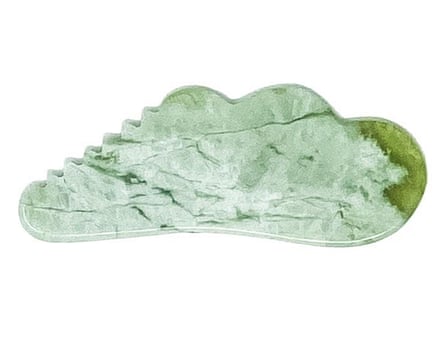
Cecily Braden jade gua sha

Jade gua sha
There are many benefits to using gua sha, the traditional Chinese medicine technique where a smooth-edged tool is used to scrape the skin. It can increase blood circulation, support lymphatic flow (the system that drains leaked tissue fluid back into the bloodstream), ease tension and promote healing. And it is safe to do at home – just be sure to invest time in learning the correct movements over the face and neck. Donna Ryan, a holistic facialist and gua sha specialist in London, says that “proper technique is essential, as poor form can lead to bruising or irritation”.
Don’t be put off, though – just go in gently. “Use light pressure, especially around sensitive areas like under the eyes or on active breakouts, or inflamed skin, rashes or compromised skin barriers. It should never hurt,” says Ryan. The key is to use upwards or outwards motions towards the lymph nodes, along the direction of the muscle fibres. Plus, “skin preparation is key: always apply a suitable facial oil to create glide and prevent tugging,” she adds.
Try practising for five minutes twice a week, but remember: never use exfoliating devices or products immediately before or after. Ryan rates the Cecily Braden pocket jade gua sha for beginners.
EMS facials for lifting and skin health

Ziip Halo
EMS (electrical muscle stimulation) devices, which tone your facial muscles, are another gadget gaining pace in-salon and have been popularised by FaceGym salons’ cult “workout” sessions. The Light Salon also uses them, and Ferguson says: “In our salon, we use microcurrent devices designed to deliver low-level electrical currents, which help re-educate facial muscles and support ATP (adenosine triphosphate, the cell’s energy currency) production.”
As for at-home versions, Ferguson says they have benefits if used with the “correct technique and frequency” and she thinks they can complement LED treatments. If you’re in the market for a device, the Ziip Halo, co-created by Hollywood aesthetician Melanie Simon, is the one to know. It’s great for beginners because it’s ergonomic, handbag-size and preloaded with a timed routine – or you can use the app to pick from targeted programmes for everything from frown lines to clearing blemishes. It can be used similarly to gua sha, gliding over facial contours.
Don’t expect magic or instant results: it’s not as strong as in-salon devices (for your safety). The Halo does, however, have additional benefits for skin condition because it also uses nanocurrent, which the brand says works on a cellular level to promote collagen production and regeneration. Try using the device about three times a week with the conductive gel provided, but no more, as Simon says: “Certain app treatments really work the facial muscles, so it’s important to have a rest day in between.”
Hair glossing for glass hair

Glaze Clear conditioning gloss
£15.99 at Superdrug
£15.99 at Amazon

K18 Peptide Prep detox shampoo
£39 at K18 Hair
£39 at Cult Beauty
There’s nothing like that salon-fresh feeling of bouncy, shiny locks that have just been dyed. After about a month, though, you’ll likely find that your hair looks a tad lacklustre. It’s probably because the gloss treatment, which coats the hair cuticles and adds nourishment and shine, has worn off. So, can you DIY between appointments? Amy Fish, a colourist at Larry King salons, gives the all-clear, as long as it has no colour in it. If it contains pigment, it could lead to a patchy finish if you’re doing it solo. “This is best done by a stylist who can take the hair in sections to make sure the product is evenly applied,” says Fish.
Glaze’s Clear conditioning gloss is ammonia-free and can be used on dry hair, taking just 10 minutes to develop. Bear in mind that losing the “glass” shine you leave the salon with could also be due to hard-water buildup, which “leaves residue on the hair – especially on blondes – and can, over time, change the tone of the hair”, says Fish. Use a deep cleansing shampoo every few washes to prevent buildup. I like K18’s Peptide Prep detox shampoo.
Approach with caution
Teeth whitening
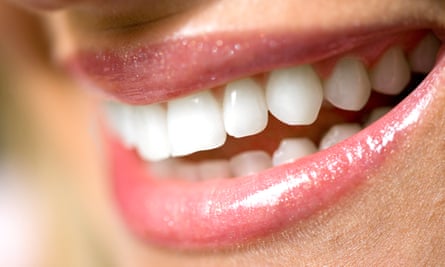
If you want a megawatt, pearly-white smile, at-home treatments might not be the way to get it. Teeth are sensitive so, for safety reasons, at-home treatments are rarely strong enough. Dr Sam Jethwa, president of the British Academy of Cosmetic Dentistry, says: “In the UK, there is a limit on how much hydrogen peroxide over-the-counter teeth-whitening products can contain.” Hydrogen peroxide “is needed to effectively whiten the teeth by a few shades, with long-lasting results”.
Over-the-counter products, such as teeth-whitening strips, pens, powders and whitening mouth guards, are also likely to create an uneven finish. This is because “the canine teeth are typically a darker shade than the rest of the teeth,” says Jethwa. Dentists can provide you with a whitening tray moulded to the shape of your teeth, which means you can control where you put the gel, and even whiten one tooth at a time.
Don’t be tempted to buy a product from outside the UK: it could “contain levels of hydrogen peroxide over the legal amount, which can be harmful to teeth and gums, resulting in tooth sensitivity, loss of enamel and inflamed gums”, says Jethwa.
If you opt for a treatment with your dentist, whitening kits generally cost from about £200, and you can expect to see results within two weeks. Importantly, as Jethwa says, “the dentist will check the health of the teeth and gums to ensure you’re a suitable candidate.”
after newsletter promotion
Self-tanning

Three Warriors gradual tan
£34.99 for 150g at Three Warriors
£34.99 for 150g at Oxygen Boutique

Three Warriors radiant complexion serum
£70 for 60ml at Three Warriors
£70 for 60ml at Oxygen Boutique
Anyone who grew up in the early noughties will recall the faint scent of biscuits that permeated classrooms and the tell-tale orange palms of those who’d discovered self-tanning. Formulas may have come on leaps and bounds since then, but there are still some pitfalls of doing it at home – rather than getting a professional spray tan – that you should be aware of.
As tanning professional James Harknett points out: “Your therapist should make the tan bespoke to your skin tone to give you the finish that’s authentic, while with at-home tanning it’s more of a case of trial and error, based on what the packaging promises. You’ll probably have to contort yourself to reach certain areas and even once you’re done, you might need to correct missed areas.”
For these reasons, I find gradual tanning products are the smartest choice for home use, as you can build it over time and are less vulnerable to obvious errors and overdoing the depth. Three Warriors makes the creme de la creme of tan in my opinion (and Harknett’s – the brand’s global creative artist). The products have skincare benefits, too, as they’re boosted with skin-nurturing ingredients, such as vitamin E and aloe vera.
Try the Three Warriors gradual tan on your body (don’t forget to exfoliate first). And for your face, the brand’s radiant complexion serum is a lovely overnight serum-tan hybrid that’s easy to apply evenly. Just remember: wash your hands immediately afterwards!
Leave it to the pros
Microneedling
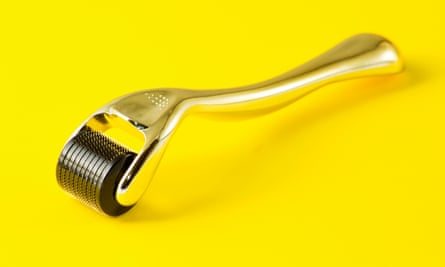
It goes without saying that injectables should be left to the pros: there are obvious safety and hygiene concerns over using needles at home. However, it’s commonplace for people to buy dermarollers or microneedling pens on the internet to get the anti-ageing benefits you might see from salon treatments. They’re considered “minimally invasive” as they use tiny needles, but as clinical aesthetician Pamela Marshall says: “They’re on the top of my ‘don’t do this at home’ list.”
So why is it liable to go wrong? “Microneedling makes thousands of microchannels in the skin, which equates to microwounds. We do this to get our healing mechanism kicking in so that we build more collagen, elastin and hyaluronic acid. But let’s be clear: it is a wounding process where we are inserting needles into our skin,” says Marshall.
Without proper training, you’re likely to be “performing these treatments without medically cleansing the face, without using sterile devices and without the correct technique at the correct depth”, says fellow aesthetician Dr Leah Totton. This “can lead to skin irritation, cuts and skin scarring, introduction of infection, irritation to the hair follicles and sensitive skin”.
Plus, there’s another possible unsightly side-effect: “You can over-produce collagen, which can give you an orange-peel-like texture. If you don’t understand skin, you really shouldn’t be messing with it,” says Marshall.
Lash lifts
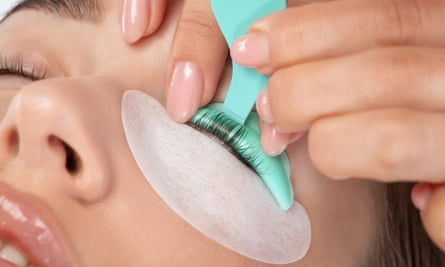
Lash lifts or perms create the appearance of naturally fluttery, full lashes, and can be combined with tinting or even extensions. They last up to two months and rival the results of the best mascaras and curlers, or even falsies. You can buy at-home kits for the semi-permanent treatment, but it’s incredibly difficult to do alone: your eyes need to be closed during tinting, and you should never get the solution in your eyes.
There are plenty of other potential pitfalls. Teresa Smith is a London-based lash artist who works with celebrities and prestigious clients, and she knows how painstaking a process it is. “To avoid over-processing or curling the lashes too much, lash lifting requires an extreme level of application accuracy and precision timing of each solution used,” she says.
Over-processed lashes will look brittle and sit in the wrong position, possibly hitting the eyelid. And, as Smith says: “Contrary to popular belief, applying castor oil or lash conditioners will not fix over-processed lashes; it can only be remedied by having a lash relaxation treatment with a professional.” So you might end up shelling out even more money to fix a bad DIY job. In short: leave this one to a professional. Smith’s signature and bespoke Lazy Lash Look treatment starts from £175. In London, a lash lift and tint can vary in price from £90 to £300 at reputable salons.
Brow lamination

Instead use: Refy Brow Sculpt
£18 at Refy Beauty
£18 at Sephora
Perming or “laminating” your brows from your bathroom is also a bad idea. “At-home kits can burn the skin and over-process the brows,” warns Smith. “Even with a really gentle brow-lamination kit, excessive brushing of the brows with too much pressure can cause micro-scratches on the skin, which will open you up to overexposure to the chemicals and irritation, as well as the potential for future allergies.” All of this would be visible on your face.
If you want a quick fix – and you have relatively full arches naturally – Refy’s recently relaunched Brow Sculpt is a cult product for a reason. The new formula is excellent for shaping and setting with a double-ended brush. The setting formula is a wax-gel hybrid, so it doesn’t look cakey or leave tell-tale white flecks.
Gel manicures and pedicures

Instead use: Wonderlayer
Just because you can buy an at-home gel mani kit, doesn’t mean you should. There’s an obvious allure to having long-lasting colour without the salon cost, but even if you’re dexterous and can work at pace, it’s best left to the pros.
“We strongly advise against doing gel manicures at home, without proper training,” says Giorgia Cappella, head of education and spa at the GelBottle Inc. “Achieving safe, and professional, results requires specialist training, as improper application and curing (setting the nails with LED), as well as incorrect removal, can lead to issues including skin irritation and nail damage, such as thinning or lifting.”
Plus, it’s unlikely you’ll be able to buy the same kit for at-home use. “Salon-grade products are often higher quality and longer-lasting than those available to consumers. And our salon UV/LED lamps are typically more powerful and consistent, ensuring proper curing,” says Cappella. You’re best off sticking to good old-fashioned nail polish at home. Wonderlayer by Beauty Pie is a great base coat to achieve vivid colour.
Hayley Spencer is a journalist and editor with 15 years of experience in writing on topics spanning style, beauty and wellness

.png) 1 day ago
7
1 day ago
7




